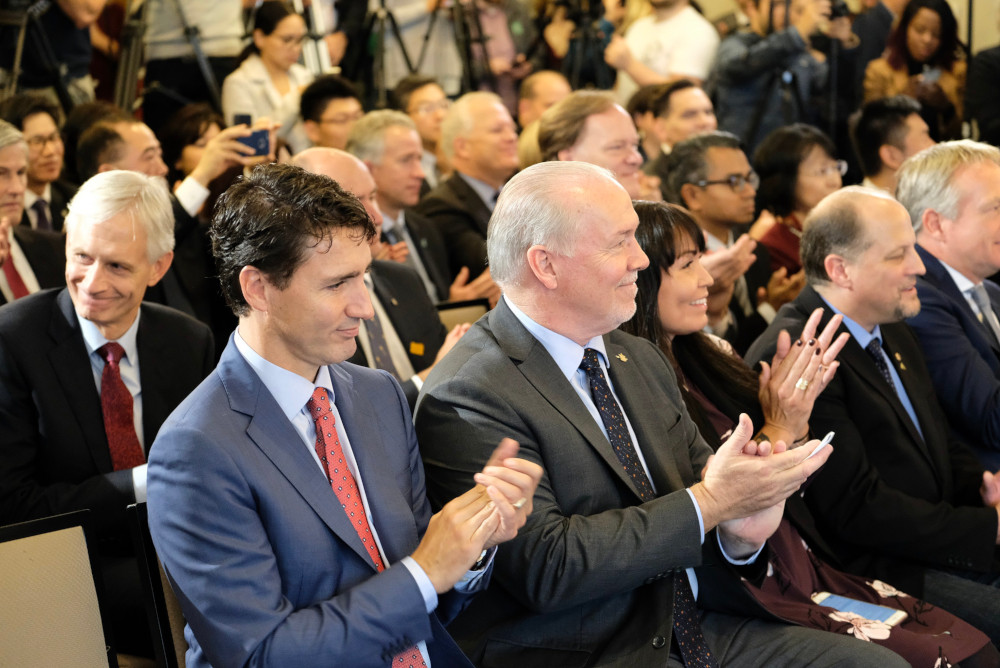Governments, media and industry use ‘low-carbon economy’ frame to continue business as usual.

Prime Minister Justin Trudeau and Premier John Horgan celebrating LNG Canada’s investment decision as an investment in the low-carbon economy. They’re missing a critical point: we need a zero-emissions economy. Photo: BC Government Flickr
In a recent Vancouver Sun column describing the introduction of enabling legislation for the Shell LNG Canada project in the B.C. legislature, Vaughn Palmer ends with these words:
“The finance ministry reckons that even with the estimated $6 billion in relief over 40 years, the province would still reap $22 billion in revenues over the same period. Without the project, returns would, of course, be zero.”
It’s a compelling comparison. With the project we can pay for schools, hospitals and poverty reduction. Without it, we have nothing.
Yet it is fallacious, a comparison promoted by Big Oil and adopted by most governments. It takes our minds off alternatives.
The correct comparison is between revenues generated from $40 billion invested in fracking and fossil fuel production versus revenues generated from $40 billion invested in renewable energy, such as solar, wind and thermal.
Two similar-sounding phrases lie at the heart of this issue. One has gained predominance, the other relegated to the margins of climate change discourse. The first is “low-carbon economy,” an economy in which even fracking and liquefied natural gas have a role. The second is “zero-carbon economy,” an economy in which no more greenhouse gases are emitted into the atmosphere. In this second framing, the goal must be an economy fuelled entirely by renewable, non-carbon-emitting sources. MORE
